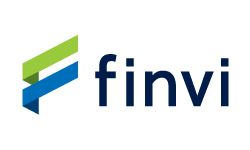Source: site

Executive Summary
- Banks hesitant about instant payment fraud can begin by only accepting inbound transfers, delivering immediate value to customers while gaining operational experience with real-time rails before tackling the fraud controls outbound payments require.
- Consumers and small businesses hold significant funds in platforms like Venmo, Square and Robinhood. Banks that accept instant transfers become the preferred destination for those balances, strengthening loyalty and reducing the risk customers shift money elsewhere.
- Unlike outbound payments, receiving funds involves no reversal exposure or irrevocability concerns. Money arrives with finality, eliminating the exception handling associated with ACH returns or wire transfers while giving institutions time to build fraud defenses for sending.
Adoption of instant payments is accelerating across the industry, but many financial institutions remain cautious. These banks and credit unions often focus on the challenges related to customers sending money in real time, including concerns about increased fraud risk. Yet for both consumers and small businesses, the ability to receive funds instantly may represent an equally high-impact value proposition — one that has the added advantage of letting participants set aside concerns about risk related to irrevocability.
Instant payments can be transformative for households and businesses alike, helping them address critical cash flow needs and eliminating uncertainty over fund availability. Recent advances in payment technology, including the launch of Federal Reserve Financial’s FedNow network, mean transfers that usually take three days to post now arrive in seconds.
Against this backdrop, it’s essential for financial institutions to get started — and receiving payments may be the right first step. “When banks talk about instant payments, they often fixate on the senders but there are very real advantages to just receiving funds instantly,” says Martin Lindholm, Director of Technical Product Management at Narmi, a technology company that provides digital banking and account-opening software to banks. “It’s only natural that people and businesses want their money in the bank, right away, not held captive by an intermediary.”
This article takes a closer look at the recipient value proposition for instant payments, and how banks and credit unions can activate it.
Want to read more like this? Check out Narmi’s content portal on The Financial Brand: Be Where Banking is Going
Use Cases and Applications
A significant share of consumer and small business funds now sit in fintech applications, including digital payment utilities, gig-work apps, and brokerage platforms — ranging from Venmo and Square, to Stripe and eBay, to Robinhood and Wealthfront. Many such platforms offer instant withdrawals, for a fee, and only if the customer’s bank can accept funds in real-time.
Financial institutions that accept those instant transfers become a preferred destination for both consumer and business funds, strengthening loyalty and reducing the risk that customers shift balances elsewhere.
The impact of settlement delays can be especially acute for small businesses, especially those with tight working-capital cycles. A one- or two-day wait for funds can determine whether a company meets payroll or restocks inventory in a timely manner. “For a small business, cash flow is everything,” Lindholm says. “When funds post instantly, it eliminates the guesswork that comes with waiting, so decisions hinge on what they have today, not what might arrive days later.” For consumers, meanwhile, the ability to pull balances instantly into their bank account can help avoid a short-term cash crunch or the need to utilize a short-term credit facility that may impose a much larger fee.
Earned-wage access (EWA), which more employers now offer, is another capability banks and credit unions can support once instant payment is enabled. EWA lets employees access wages they’ve already earned outside the regular payroll cycle. In contrast, traditional pay cycles make employees wait two weeks for wages, often with additional settlement delays. Especially for lower-income hourly and service-sector workers, such lags can lead to overdrafts or compel workers with immediate cash needs to seek out costly payday loans.
Financial institutions should be aware that some employer HR teams provide employees with lists of banks or credit unions — or specialized fintechs — that support instant payroll deposits, potentially giving those institutions a competitive edge. In addition, Lindholm said, “EWA beneficiaries may transact more frequently, becoming more aware of their financial institution in the process, and recognizing the benefit it’s providing.”




